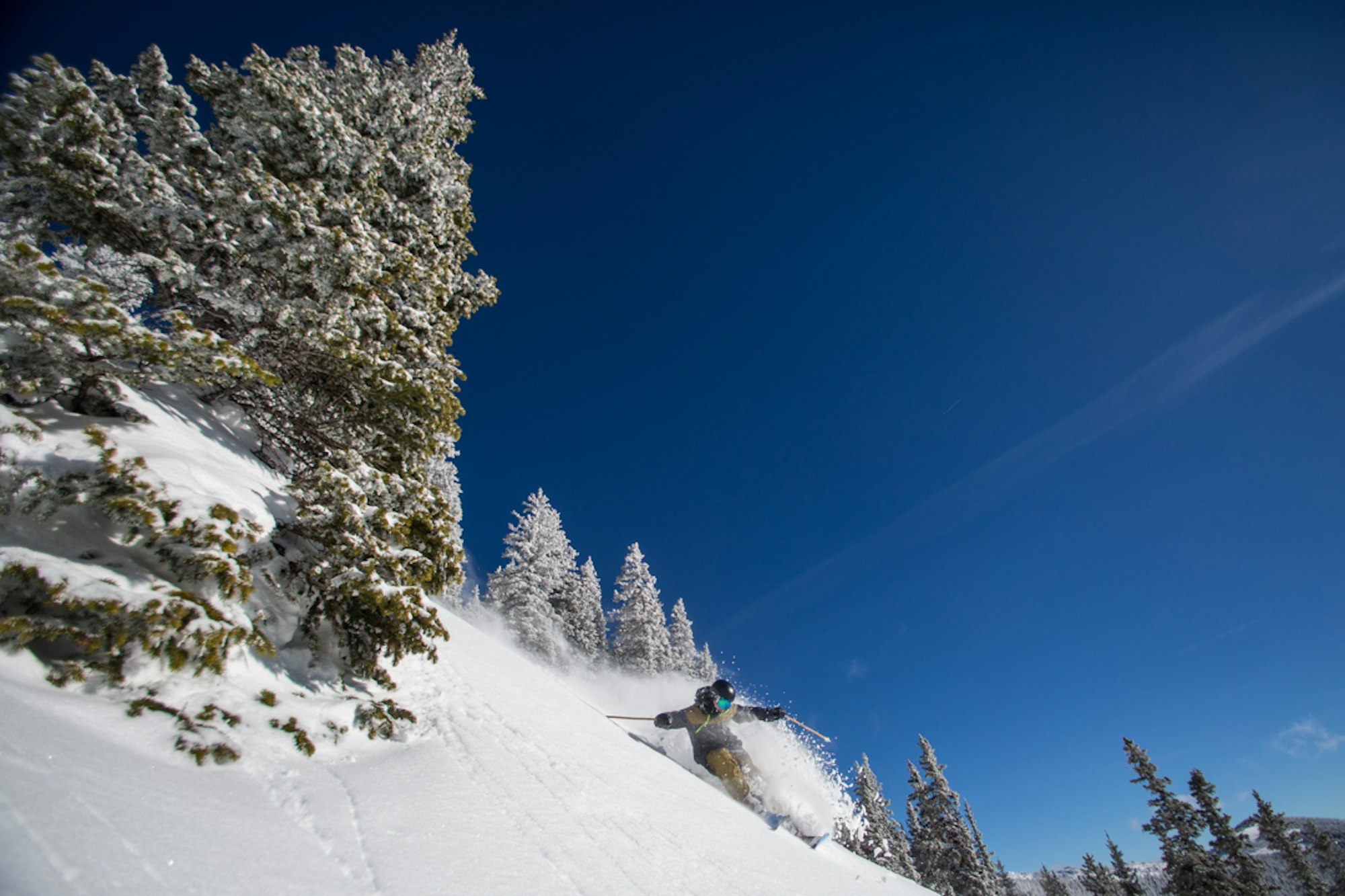Photos by Kjell Ellefson
My trusty 2011 Subaru station wagon rumbles along U.S. Route 50, still noticeably annoyed at being asked to start its engine with an outside temperature reading of 3 degrees Fahrenheit. FREESKIER photo editor Kjell Ellefson and I are heading out of Salida, Colorado en route to Monarch Mountain. While Ellefson had visited the ski area before, it’s my first time traveling to the skiing gem planted high in the Sawatch Range. We’re here to experience the ski area’s chief attraction: Monarch Snowcat Tours. The cat-skiing service provides 1000-plus acres of high alpine terrain atop the Continental Divide.
In my head, an air of mystery surrounds the ski area, stemming almost entirely from its off-the-beaten-path location. Salida, located 142 miles from Denver and the closest town to Monarch, could be better defined as a rafting capital or mountain bike destination than a stereotypical Colorado ski town. You won’t find any mega-hotels, ski shop chains, Swiss-inspired buildings, high-end boutiques or specialty stores. In fact, Salida is home to 138 historic buildings, the most in Colorado. Its rows of brick buildings—built with clay taken from the hillsides south of town—house cowboy bars, locally-owned restaurants, small sport shops, vintage hotels and art galleries that provide a charm lost upon many parts of the Centennial State.
That local, down-home feel permeates the ski area, located 21 miles west of town near the summit of Monarch Pass. The base area sits at an astronomic elevation of 10,790 feet above sea level and is comprised of a single parking lot, a base lodge, a large tent housing the rental shop and ski school, as well as a few yurts used to shelter ski patrol and the cat-skiing operation. As opposed to promoting gimmicky attractions, the base area services are in place to ensure skiers have an amazing time on-hill. The bottom line is, at Monarch, it’s all about the skiing.
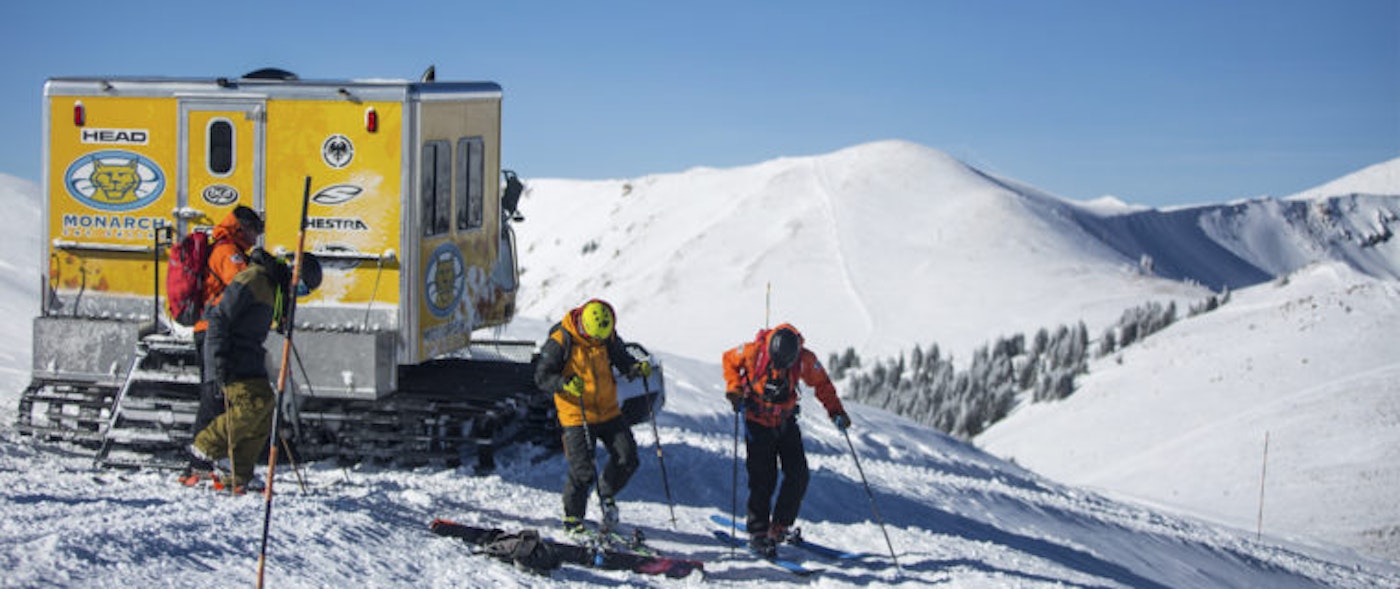
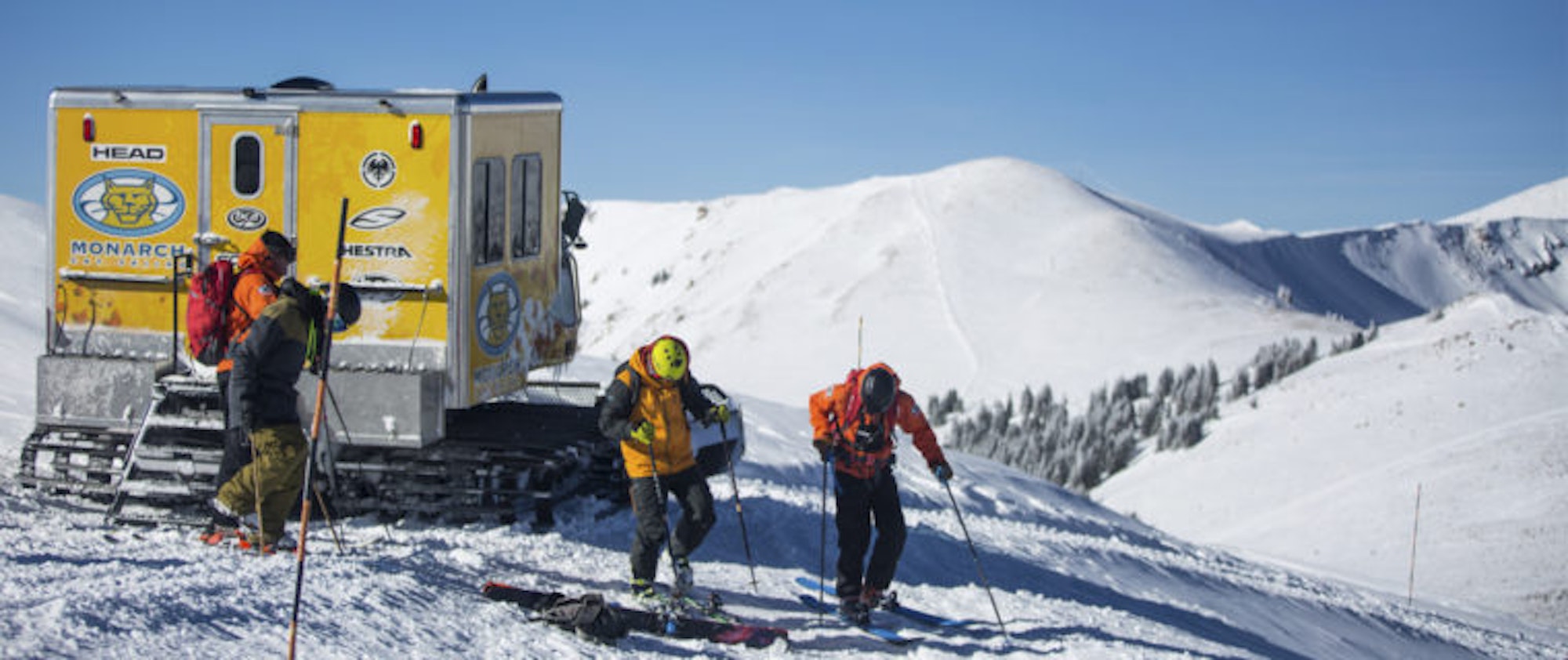
“You won’t see the huge expansion into multiple shops in the base area or lodging or anything along those lines,” explains Jessie Smith, director of sales and marketing. “We believe that when people can come right in, park and hit the lift all within ten minutes—that’s if you’re parking at the back of the lot—we think that makes the experience on the mountain that much better.”
While Monarch’s six chairs and 800 acres of terrain may seem modest, the skier traffic never causes concerns about lengthy lift lines and the variety of trails cater to everyone, from first-timers to seasoned shredders. Skiers looking for more challenging lines can ascend the 15-minute bootpack from the top of the Breezeway double chair to Mirkwood Basin, which opened in 2006 and provides an additional 130 acres of skiing goodness, 88 percent of which is rated as “extreme.” While Mirkwood boasts ultra-formidable terrain, it’s the cat-skiing that we’re interested in, today.
Cat-skiing operations—both resort-affiliated and independent—aren’t a rarity in Colorado. What sets Monarch Snowcat Tours apart is how it easily facilitates the process of first-timers testing the backcountry waters.
An individual day rate in the Monarch cat during regular season (January 9 – March 27) will run $350; the late season rate (March 28 – April 10) is $250. For reference, a day of cat-skiing in similar out-of-bounds, high-alpine terrain at other Colorado operations generally runs from $400 to $600. With vertical in the 8,000 to 10,000 foot range per day, the value is darn-near unmatched for those looking to add cat-skiing to their growing list of ski tales they’ll share with friends and family.
The value is more than just dollars and cents. Monarch’s crew of seasoned guides holds guest experience above all else. From choosing zones that cater to skier ability level—Monarch does require a certain level of skiing capability to join the cat—to thoroughly inspecting slopes before, during and after trips, to building rapport inside of the cat, the guides are integral to the experience.
“For somebody looking to get into more of that rugged terrain, looking for that adventure experience, having access to personal guides is an awesome way to start to make that transition,” Smith explains.
“I really stress safety—skiing within your limits and under control,” explains Andy Ruggles, cat ski lead guide. “If we get a bunch of snow overnight we’ll come in early in the morning and throw explosives; we employ a lot of ski cutting in general and just try to keep everybody from getting hurt or ‘taking a ride.’”
That comfort level caters towards bucket list-focused adult skiers, yes, but it’s also a great way to inspire youth to push their skiing into the backcountry. Monarch will allow skiers age 14 and younger to hop in the cat, as long as they’re accompanied by a parent or guardian and of the appropriate skiing level.
“When I came on at Monarch I saw that opportunity [to allow younger skiers to participate] and thought it was pretty cool for Colorado families,” explains Smith. “These kids have been skiing their whole lives anyway, so I think that’s a pretty great thing for us to offer.”
While affordability, veteran, approachable guides and an inclusive nature all contribute to the out-of-bounds transition, a skier needs dependable gear to handle conditions that range from deep, blower powder to wind-buff to firm, variable snow. And so, for the 2010-11 ski season, Monarch partnered with HEAD Skis to offer a demo fleet of Flight Series skis to offer to guests without the proper equipment for the backcountry.
Those unfamiliar with HEAD’s freeride program would probably associate the brand with race and premium products, thanks to high-profile athletes like Lindsey Vonn, Bode Miller, Ted Ligety, etc. However, the freeride and freestyle portion of the brand has had to take a much more down-home, local approach to developing business—a key part of the partnership with Monarch.
“Grassroots play a much bigger role for us in the freeride and freestyle categories, because we’re a developing company when it comes to that,” explains Andrew Couperthwait. “Partnering with a company like Monarch Snowcat Tours allows us to reach consumers on more of a grassroots level where they might not [otherwise] be introduced to our Flight skis as easily as we would like. It helps us get more visibility with the average consumer.”
Members of the freeride-specific Flight Series have been awarded Editors’ Pick distinction in each FREESKIER Buyer’s Guide since the series’ inception in the 2013-14 season. They’re built to instill confidence in all of the conditions listed previously, allowing customers to focus on having fun rather than fussing with equipment.
Couperthwait believes the cat-skiing operation provides “the perfect environment for people to learn about [HEAD’s] product. [Guests] are able to explore the natural environment for those skis.”
So, how was the skiing, you wonder?
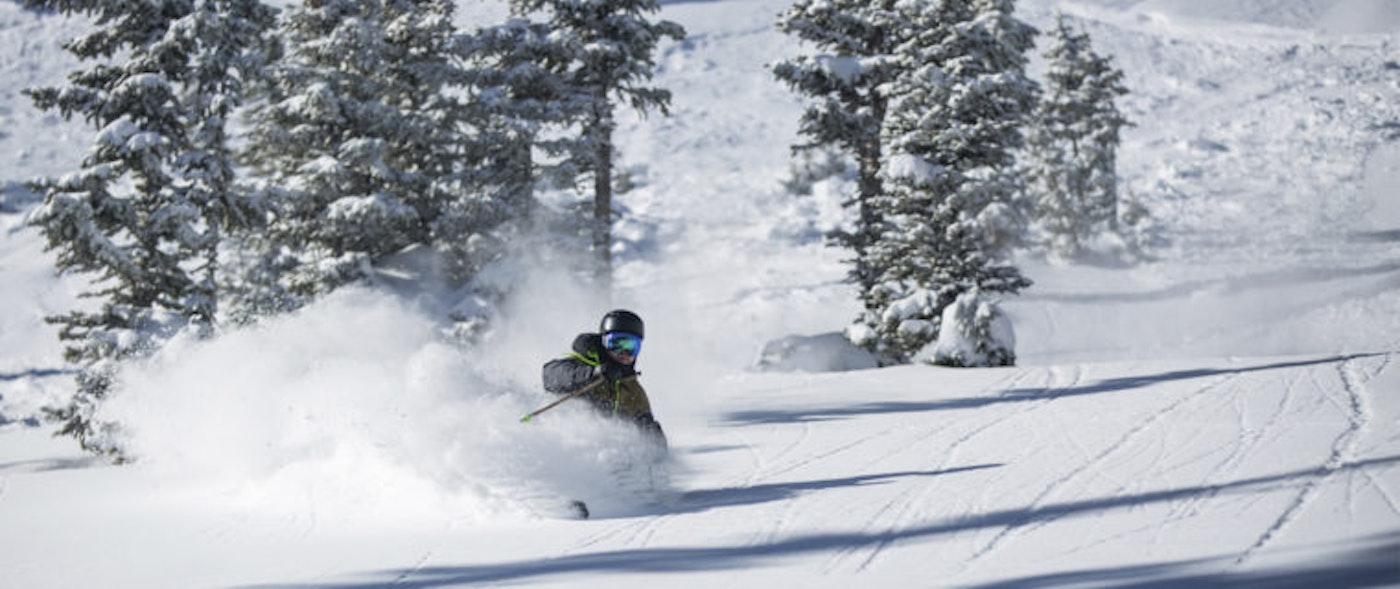
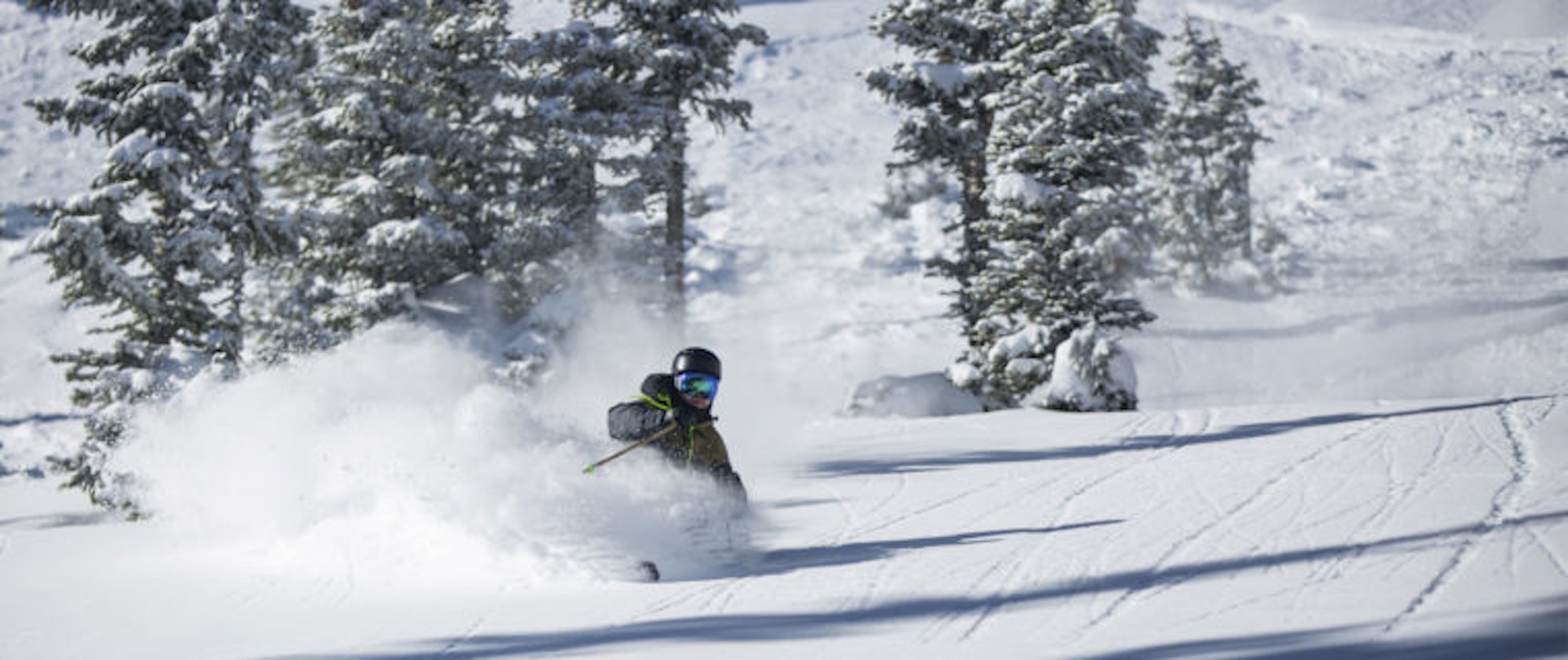
Monarch’s team of guides—Ruggles, Dan Niccols and Brian Simonds—greets Ellefson and I as we walk into the small yurt used as the base of operations. Pro skier and HEAD Skis athlete Alex Schlopy, who just made the not quite eight-hour drive from Park City, UT, soon joins us. Not one of the nine people in the circular structure is unaware of the half foot of fresh snow reported by the ski area that morning. In fact, I’m hopeful it’s skiing much deeper than that in the cat-ski tenure.
We sign waivers accepting the risk associated with heading out on the cat, and watch a short safety video outlining proper backcountry practice while we’re out-of-bounds for the day. From there, we take a short walk to Breezeway, frothing at the mouth to blast through soft snow under bluebird skies.
We crest the apex of the lift and are deposited atop the Continental Divide, where the snow machine awaits us. We traverse past the ski patrol house where a beacon monitoring light flips from red to green as we pass—informing us that our avalanche transceivers are in transmit mode—and hop into the vehicle.
Once our crew—the guides, Ellefson, Schlopy, myself and Mark, a returning guest who had booked his trip months in advance—has assembled inside, the 12-person cat shifts into gear and rolls northwest along the “Waterdog Ridge.” Mark tells us that we’re in for some badass skiing and we’ll soon find out why it’s no surprise that he’s back for a second adventure on the cat.
“We know that we have something special with the cat-skiing operation with how many people come back year after year and build relationships with our cat guides,” Smith explains. “You’re seeing the same faces when you come back here after a year. It’s something really awesome about our cat operation.”
Following five minutes of jokes, story telling and bursts of laughter, the cat growls to a halt. We exit the doors, grab our skis, click in and traverse to the top of a zone called “Fifi’s.” The first thought that comes to mind: “Damn, there’s a lot of snow down there.” Monarch receives some of the most abundant and highest quality snow in the entire state, thanks to its location on the Continental Divide. The Divide is a natural snow gun. Its high elevation—we’re standing at around 12,000 feet above sea level—helps produce massive storms that drop even bigger snowfall totals. It’s above treeline and exposed, too, allowing the wind to deposit snow in each and every direction, creating deep pockets of powder that most skiers only dream of.
The guides give us a briefing about the line in front of us, dubbed Fifi’s 2—a wide open bowl to the skier’s right with a short line of trees to the left containing a natural hit into the run-out below. After some ski cutting, Brian and Dan ski down to the bottom of the run, creating a left and right safety zone for the rest of us to follow.
Schlopy drops first, blowing up clouds of cold smoke and heading straight for the aforementioned takeoff. He pops into the air, frozen crystals following him into the air, and lands, sending up a glittery explosion of snow as he somersaults forward into the basin below. After a hushed moment among the group, Schlopy pops up, snow in his goggles and a massive grin on his face, ready for the next run. The rest of us follow, trenching turns in deep snow (five inches, my butt!) with the formidable fourteen thousand foot peaks of Mt. Shavano and Tabeguache looming above. It’s going to be a great day.
We continue to indulge in the riches offered by the east facing slopes of the Waterdog Ridge in the morning. Whether we opt for the wide-open tree gully of Dog Leg, the expansive bowl of Dog Heaven and Dogs Run Free, the steep, rocky Krudski Chutes or the mini-golf heaven of The Hydrant, the snow is cold, light, deep and untouched.
After a pit stop back at the cat-ski yurt for lunch—the deli sandwich spread was a welcome refuel following a morning of non-stop laps—we spend the afternoon in the late-day sun on the west facing glades of High Lonesome. The sun-baked snow yields much of the same reaction as the morning runs: Huge smiles with an abundance of hooting and hollering.
During transport to one of our next lines, I ask Schlopy what his perspective of Monarch was both before his visit, and now after having experienced all that the cat-skiing operation has to offer.
“Prior to coming here today, I’d only heard of Monarch Pass and Monarch Mountain, I’d never actually been up here,” he explains. “After being able to cat ski all day, to say I’m impressed would be an understatement. It’s a really unique experience. There’s really awesome terrain that seems pretty endless, fresh tracks every run, everyone is smiling and high-fiving at the bottom. That’s always a good thing, always a good sign.”
We ski well past 4 p.m., the Monarch parking lot nearly empty by the time we return to the base. The sun is descending behind the divide as Ellefson packs our gear into the car. I hop into the driver’s seat and stick the key in the ignition. The temperatures have dropped back below ten degrees and with another annoying grumble the Subaru engine ignites. We roll out of the parking lot and point it east for our (just under) three-hour commute back to the Front Range. With a similar drive time to many resorts along the I-70 corridor (factoring in traffic), an incredible local vibe and magnificent snow that never tracks out, I find myself wondering why I’d never high-tailed it down to Monarch until now. I’m certain I’ll be back in no time.

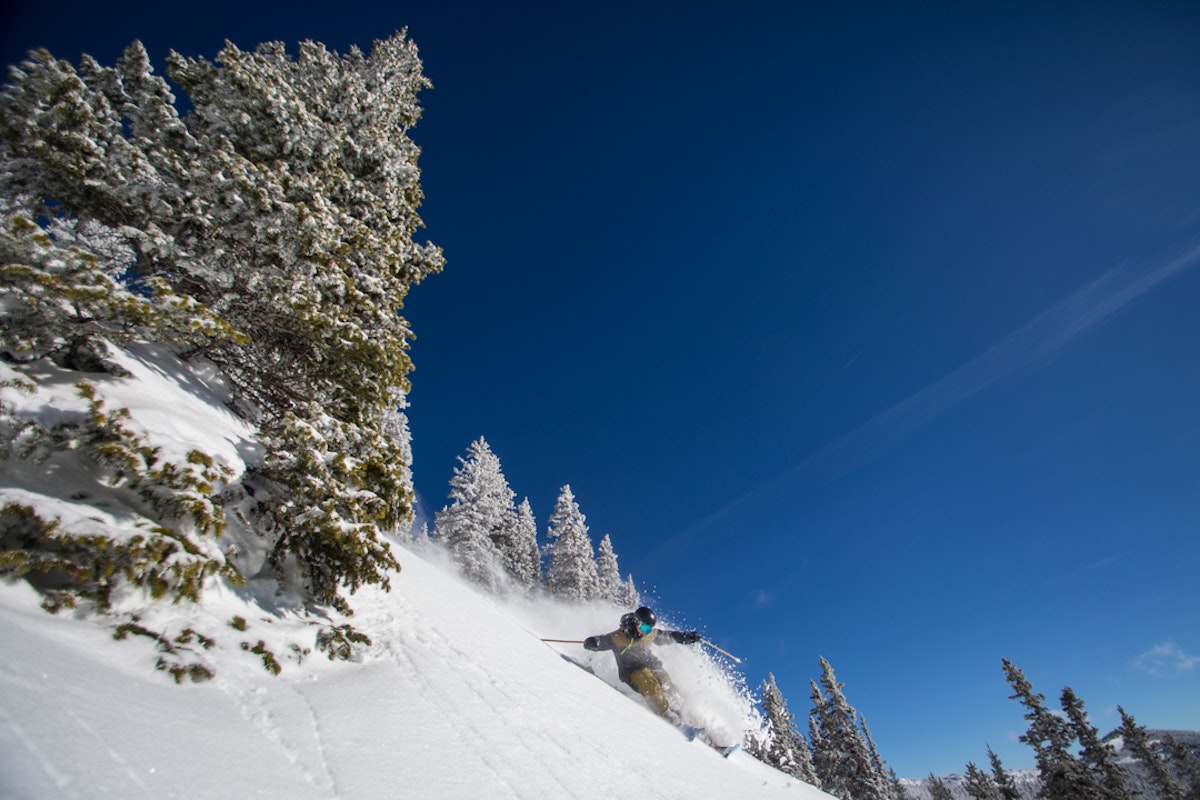
![[GIVEAWAY] Win a Head-to-Toe Ski Setup from IFSA](https://www.datocms-assets.com/163516/1765920344-ifsa.jpg?w=200&h=200&fit=crop)

![[GIVEAWAY] Win a Legendary Ski Trip with Icelantic's Road to the Rocks](https://www.datocms-assets.com/163516/1765233064-r2r26_freeskier_leaderboard1.jpg?w=200&h=200&fit=crop)

![[GIVEAWAY] Win a Legendary Ski Trip with Icelantic's Road to the Rocks](https://www.datocms-assets.com/163516/1765233064-r2r26_freeskier_leaderboard1.jpg?auto=format&w=400&h=300&fit=crop&crop=faces,entropy)




![[GIVEAWAY] Win a Head-to-Toe Ski Setup from IFSA](https://www.datocms-assets.com/163516/1765920344-ifsa.jpg?auto=format&w=400&h=300&fit=crop&crop=faces,entropy)


